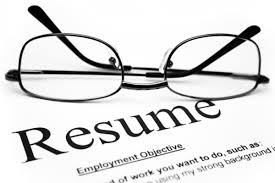 Writing out your career resume can be a daunting task. Whether it’s the very first resume you’ve ever created, or you’re trying to reconstruct your resume for a brand new field, sometimes it’s tough to know what to include or where to begin. Even if you’re having a professional resume writer create your resume for a fee, you still need to compile the information so the writer can incorporate it into your resume.
Writing out your career resume can be a daunting task. Whether it’s the very first resume you’ve ever created, or you’re trying to reconstruct your resume for a brand new field, sometimes it’s tough to know what to include or where to begin. Even if you’re having a professional resume writer create your resume for a fee, you still need to compile the information so the writer can incorporate it into your resume.
Organizing your resume and figuring out what to include can be challenging. Your resume is important because you want it to stand out from your competition. Human Resources usually look through thousands of resumes. Organizing your resume in an easy to read and professional way will help keep you out of the trash.
Important note: Many job hunters discount the importance of the cover letter that accompanies the resume – or overlook its importance entirely. A solid cover letter is key… it is your first chance to communicate with their potential boss or employer. Check out tips on writing a cover letter here.
Here are the 5 steps you need to take when you are writing your resume, or when you are preparing to have a professional resume writer write it for you.
Step 1: Write out your career objective.
What type of job are you searching for, and in what field? State your objective clearly and simply, and try to use powerful language where appropriate, to convey what you mean.
Step 2: Outline your career history.
This step takes research. You may have to go through old paperwork and files, locate check stubs from former employees, or hunt for company details on the internet. Information you must provide:
o Official company name, city and state
o Title of your position (if you held multiple titles over time, you can list these out)
o Start date and completion date of your employment there (If you still work there currently, you can say something like, “December 2003 to present”)
o Job description – use bullet points to briefly describe your responsibilities for each position listed
Step 3: Detail your educational background.
Your future employer will want to know what if any degrees you hold, and from which educational institutions. If you are applying for a job that requires certified training or a license to practice, list these as well.
Step 4: Describe your skills.
Here is where you want to tell the hiring manager why you’re the right pick for the position. You do this by explaining what skills and personal qualities you bring to the table. This section can be broken up into categories, including job skills that pertain to the field you work in, and interpersonal skills, that will help the employer match your strengths to the company’s needs for specific personal attributes.
Step 5: Cover your computer and technical proficiencies.
Run through your career history and try to remember every program you’ve ever used or received formal training to use, for each of your jobs. Even the most basic, like Microsoft Word or Outlook, or an obscurely named internal database program that people may not recognize, should be included here. Technical skills are highly sought after in today’s career marketplace, so you’ll want to be sure you describe yours in detail.
Depending on how much room you have left over and also depending on the type of job you seek, you may wish to include clubs and organizations you belong to or other extracurricular activities you engage in on a regular basis.
Now that you have the basis for your future resume, the next step is pulling the information together into a cohesive, attractive package that successfully markets your skills. If you’d like to speak to a professional career coach about this or other aspects of your career search, contact me for a complimentary phone consultation today about career coaching today.
We hope this is helpful to you! The career coaches at HallieCrawford.com.



